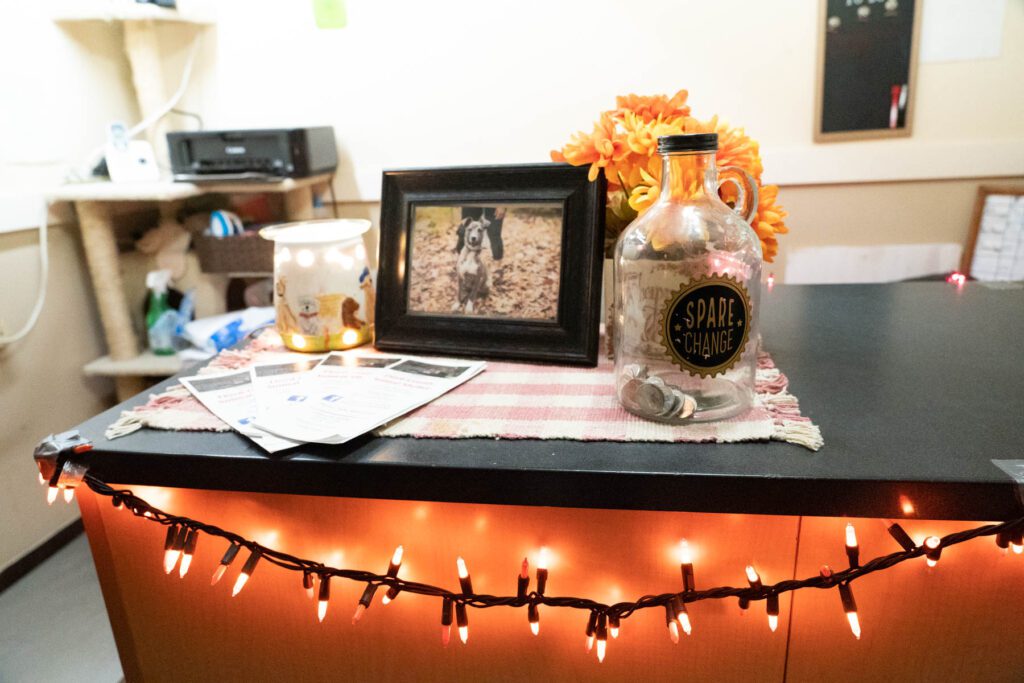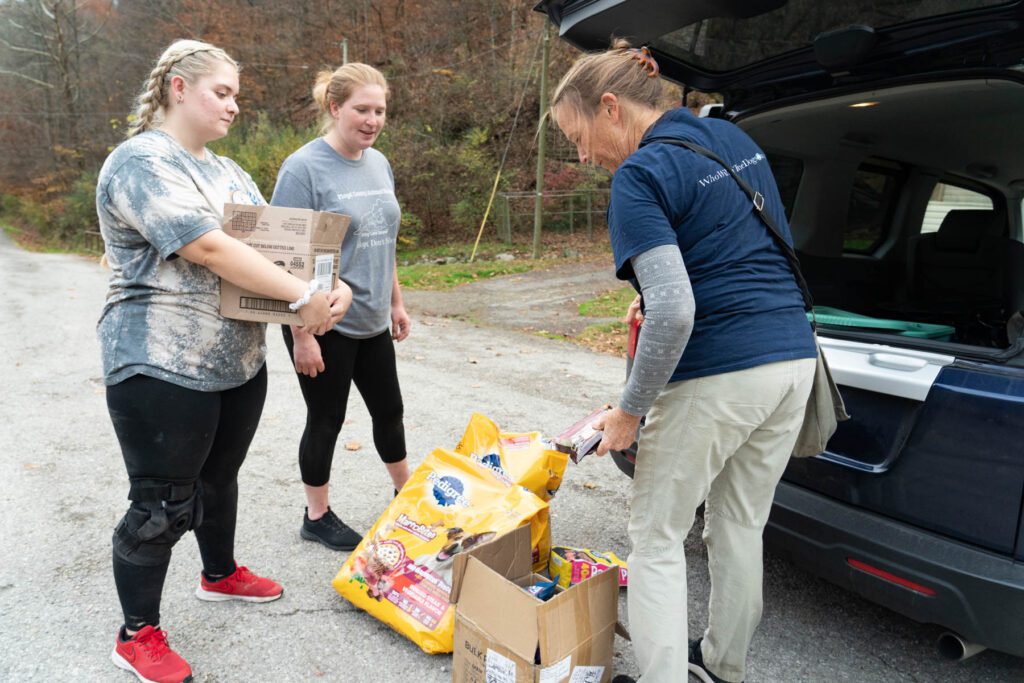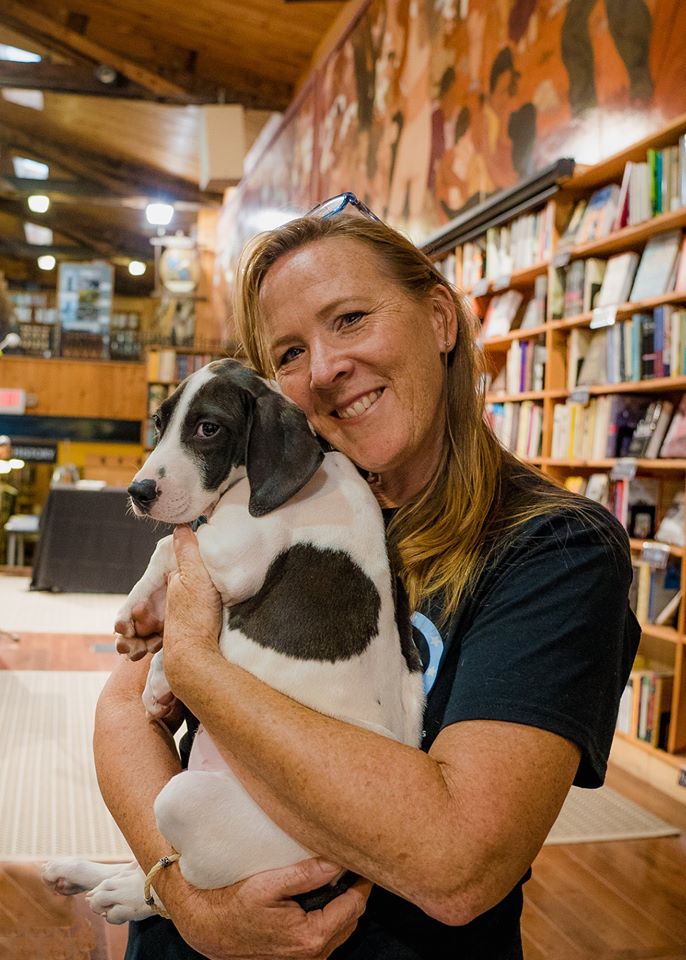Two thousand dollars a month.
That’s how much Floyd County, Kentucky pays for the Floyd County Animal Shelter. That number includes the salaries of all three people who work there ($7.25/hour), the food, the utilities, the medical, everything for the approximately 900 animals that come through the shelter each year. When we visited there were about 120 dogs and cats (in about equal numbers).
I’m still muttering that number to myself as I write this. (“2000? How is that possible?”) Granted, the median income for Floyd County is $19K for an individual and 35K for a family, as evidenced by the trailers and chickens and battered vehicles all along the narrow one lane dirt road to the shelter.
What’s really remarkable, is despite the aging, dark, cramped building, the ridiculous budget, and the challenge of finding quality adopters (or even a few volunteers to actually show up), the incredible staff we met (no one has titles) are saving every adoptable animal. And the animals leave for adoption or rescue spayed or neutered, vaccinated, and dewormed.







Allison has been at the shelter for two years and Kimberly has been there about the same, off and on. “Obviously, I’m not doing this for the money,” Allison told me, “I do this for the animals.”
Kimberly used to work in a vet’s office and has turned down opportunities to work in a local clinic, because she is compelled to help at the shelter. Kimberly had to leave for a bit to have her daughter who she often brings along to work in a backpack.


The shelter charges an adoption fee of $120 for dogs, and tries to charge a minimal fee ($20) for owner surrenders, but there’s no way they can cover their expenses with adoption fees, surrender fees, and the county’s meager contribution.
($2000 dollars? I’m still muttering my shock at this.)
It was late when we got to the shelter thanks to unexpected delays, but Allison and Kimberly waited for us. They showed us around the facility and told us stories of the animals in their care.






We met Harley, who has been with them since April. He was surrendered by a family member who told them Harley had been beaten for five years by the boyfriend of another family member. He lunged at Allison and she told the person surrendering him that the shelter couldn’t take a dangerous animal. The woman told her, then she guessed she’d just let him out up on the highway and hope he got hit.
Allison took the dog. She was bitten several times just getting Harley into his kennel and for two months couldn’t touch him. But she had room and decided he deserved some time, a bit of grace after a life of cruelty. Slowly, Harley warmed up and now he is a sweetheart, loving on everyone. Initially he was available for rescue only, but now she’s confident he can be adopted. He’s doing great with everyone, especially kids. A dog’s capacity for forgiveness is remarkable.
We also met Shawn, DVM, a dog who has gotten into the local hospital three times. Not kidding. The dog kept getting loose and going to the hospital. He walked right in the automatic doors. One day he even turned up in a surgery. A nurse finally brought him to the shelter. Allison speculates that his previous owner might have gone to the hospital and not come out.
Like so many places, Floyd County shelter is dependent on rescue. They’ve got a handful of good partners. One who moves their dogs to Canada and another who takes them to Minnesota. They’d love to find a few more partners, so they didn’t stay so full.





Floyd County was our 95th shelter visit. By now you would think I had seen it all, but once again, I am stunned by the hearts of people like Allison and Kimberly, at how much they sacrifice, and at how much they are taken for granted. Almost a thousand animals are saved every year by these hardworking women (and Nathan who was leaving when we arrived and specializes in the cats).
They spend day after day, 365 days a year, driving up the narrow, rutted road to the shelter at the end of the hollow to care for animals in a shelter that is likely largely forgotten by the community, certainly by the county government. The kennels are old, many are cramped. In one kennel puppies poke their heads through the hole in the rusted wires. Despite the worn facility, it was clean and smelled better than many of the new shelters we visit.
One the front desk was a picture of one of the dogs Allison had chosen to be the pet of the week. Next to her picture was a jar for spare change. Everything in it (Allison had contributed five dollars to get it started) would go toward that dog’s fees. She doesn’t tell perspective adopters that a dog’s fee has been sponsored until they choose that dog. When they try to pay, she hands the money back and says this dog is already sponsored, but they are welcome to sponsor another dog. Although this is a poor area (and some of the dogs are sponsored), she doesn’t believe in giving dogs away and worries that people would come to the shelter looking for a bait dog or other horrific reason.

When we were looking for shelters to visit in Kentucky, I looked at a list of the poorest counties and searched for shelters in that county. I reached out to the Floyd County shelter via their Facebook page, expecting no response (as was the case with the other eight shelters I’d messaged), but Allison came right back, “YES! We’d love to have you come. We need your help!”

So, we will do all we can, but they need a lot more than just us. If you can help in any way, please consider donating through their Facebook page or tagging someone you know in Kentucky. If you’d like to help, you can shop the shelter’s Amazon wishlist. Or you can donate via paypal here.
Allison was working in daycare before starting work at the shelter. She dreams of being a veterinarian and definitely has the smarts to be one. I asked her before we left why she stays here.
“They need me,” she says, nodding back toward the building. I can’t imagine they ever won’t need her, but I hope someday she gets her chance to go to vet school or pursue some other job, something besides cleaning up after animals, dealing with ignorance and apathy, and sacrificing her own personal time and fortune to help somebody else’s animals.

Until each one has a home,
Cara
If you want to learn more, be sure to subscribe to this blog. And help us spread the word by sharing this post with others. Visit our website to learn more.
You can also help raise awareness by following/commenting/sharing us on Facebook, Instagram, YouTube, and Tik Tok!
Learn more about what is happening in our southern shelters and rescues in the book, One Hundred Dogs & Counting: One Woman, Ten Thousand Miles, and a Journey Into the Heart of Shelters and Rescues (Pegasus Books, 2020). It’s the story of a challenging foster dog who inspired me to travel south to find out where all the dogs were coming from. It tells the story of how Who Will Let the Dogs Out began. Find it anywhere books are sold. A portion of the proceeds of every book sold go to help unwanted animals in the south.

Watch our Emmy-nominated, award-winning short documentary about rescue in western Tennessee here.
For more information on any of our projects, to talk about rescue in your neck of the woods, please email whowillletthedogsout@gmail.com or carasueachterberg@gmail.com.
And for links to everything WWLDO check out our Linktree.



Leave a Comment
Sign up for our newsletter
Sign up to have our latest news, grant updates, shelter visits, and more delivered to your inbox.
Share this:
Like this: